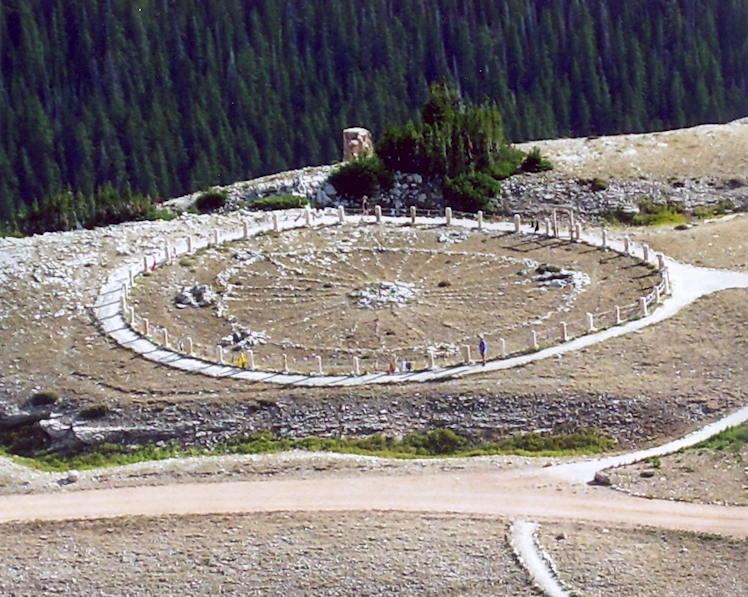How does the Medicine Wheel help us to realize a more fulfilling life?
Our happiness is produced, not by our external life conditions, but by our perceptions and thoughts about our life and what happens to us. We are not upset or made happy by events, but by our reactions to events.
To understand the significance of the Medicine Wheel, we need to go back to a time when most Indian nations were constantly at war with each other. Tribes were obsessed with wiping out their "enemies." Then a dramatic shift in perception occurred, and a peace was realized, which lasted for a period of 150 to 200 years. This long truce was the result of a great Iroquois chief, (sounds like Agonawila), later to become Hiawatha, who urged the tribes to cease the madness of brother killing brother, and formed an alliance, which came to be known as the Confederation of Nations. The Confederation recognized that Indian peoples were more alike than different. Even though they spoke different dialects, they had the same basic belief systems and followed similar traditions.

The Medicine Wheel is located in the Bighorn National Forest on the western peak of Medicine Mountain at an elevation of 9642 feet in the Bighorn Range east of Lovell, Wyoming. The 75-foot diameter Medicine Wheel is a roughly circular alignment of rocks and associated cairns enclosing 28 radial rows of rock extending out from a central cairn. This feature is part of a much larger complex of interrelated archeological sites and traditional use areas that express 7000 years of Native American adaptation to and use of the alpine landscape that surrounds Medicine Mountain. Numerous contemporary American Indian traditional use areas and features, including ceremonial staging areas, medicinal and ceremonial plant gathering areas, sweat lodge sites, altars, offering locales and fasting (vision quest) enclosures, can be found nearby. Ethnohistoric, ethnographic, and archeological evidence demonstrates that the Medicine Wheel and the surrounding landscape constitute one of the most important and well preserved ancient Native American sacred site complexes in North America. The Bighorn Medicine Wheel is considered the type site for medicine wheels in North America. Between 70 and 150 wheels have been identified in South Dakota, Wyoming, Montana, Alberta, and Saskatchewan.
An important part of this transformation was the medicine wheel, decorated in special symbols, colors, and stones, to let people entering the tribe know about its inhabitants. The wheel was a reflection of an individual's strengths and weaknesses, and it gave people guidelines to follow for personal growth. It told people what they needed to learn and what they needed to teach. Everyone was ordered to work on themselves, or else leave the tribe. After several generations of this work, people lost the concept of blame and anger. This, in turn, resulted in the longest peace in modern history.
Brother Eagle Soaring, from Arizona, explains the powerful impact of the healing wheel: "If I said to you, 'Does anyone ever make you angry?' you would say yes. But in reality, this is totally impossible. You choose to be angry by the way you process the event. This is something you were taught to do as a child. If you could imagine not one person in all of New York City having the concept of anger, that's what it was like during that time period of no wars before the white man came."
The wheel is a circle divided by a cross to create four directions--the north, east, south, and west. A forerunner to astrology, each person is represented somewhere within that circle, depending upon their birth date. That placement is associated with a special moon, power animal, healing plant, color and mineral, as outlined below. Though more complex in actuality, here Brother Soaring Eagle gives an overview of the special meanings the medicine wheel can have for individuals:
| |
Bighorn Medicine Wheel |
![]()


